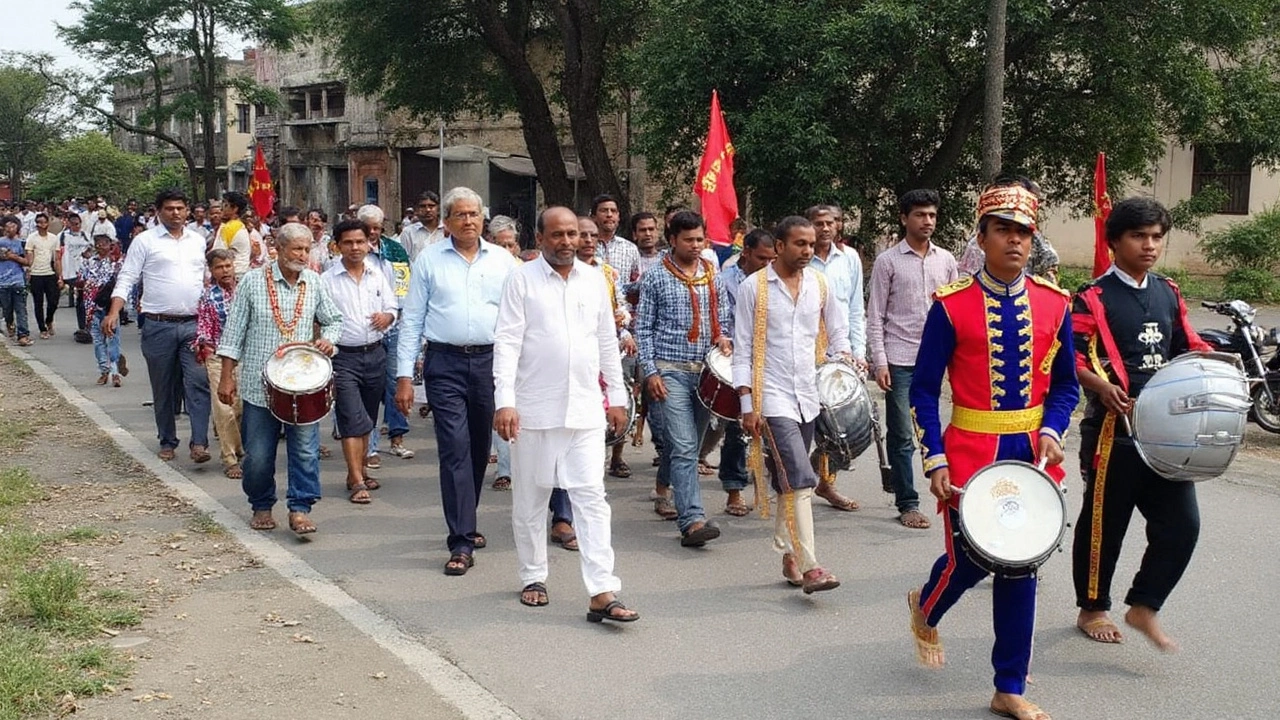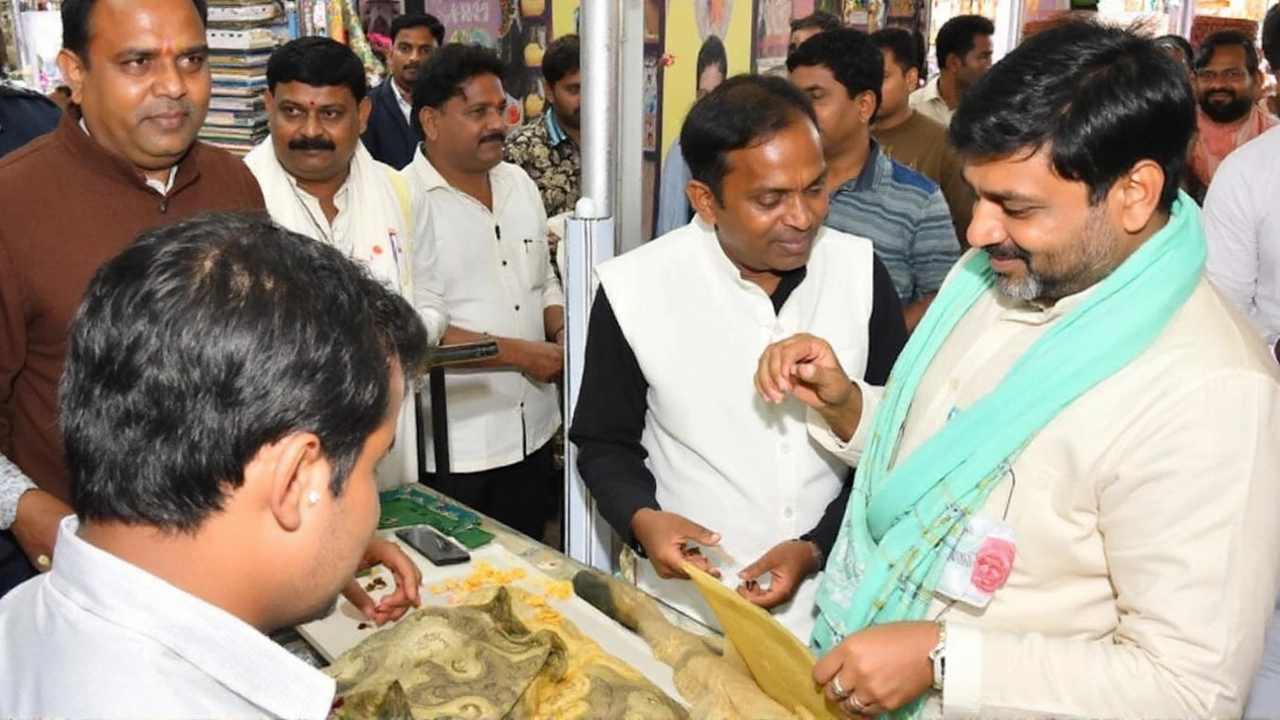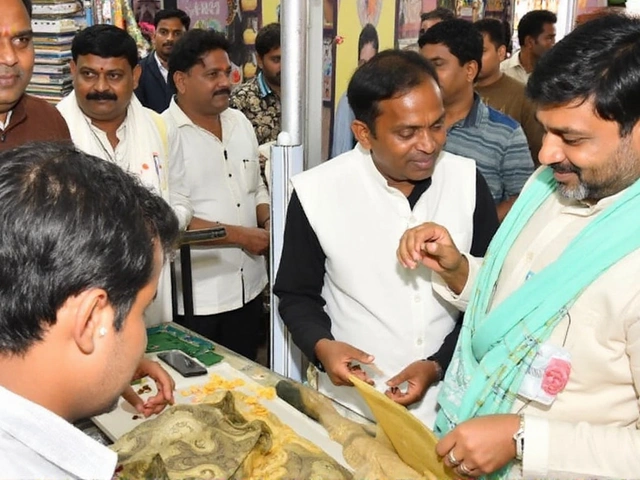Background of the Unconventional Dussehra
Every year across India, Dussehra marks the triumph of good over evil as crowds gather to watch the towering effigy of the demon king Ravana go up in flames. This year, the city of Indore will rewrite that script. A men’s‑rights organisation called Paurush announced that it will stage a first‑ever “Surpanakha Dahan”, a public burning of an eleven‑headed effigy representing the mythological sister of Ravana.
According to Ashok Dashora, Paurush’s president, the decision is meant to broaden the symbolic focus of the festival. "If Ravana embodied evil in ancient times, today we must confront modern‑day Surpanakhas who wreak havoc in different ways," he told reporters. The group says the effigy will not be a generic figure; each head will display the photograph of a woman who has been charged with a grave offence, ranging from murder to cyber fraud.
At the centre of the sculpted monster sits the likeness of Sonam Raghuvanshi, a 32‑year‑old resident of Indore. Police in Meghalaya have filed a charge sheet that alleges she conspired with her lover, Raj Kushwah, to murder her husband Raja Raghuvanshi during their honeymoon in May 2025. The case attracted nationwide headlines because the killing allegedly took place while the couple were on a vacation meant to celebrate their marriage.
Another prominent face on the effigy belongs to Muskan Rastogi of Meerut. Media outlets dubbed her the “drum killer” after investigators said she and a male accomplice strangled her husband in March 2025 and concealed the body in a blue industrial drum. The gruesome details have cemented her name in the public imagination as a symbol of domestic betrayal.
The remaining nine heads will feature women such as Harsha Padiyar, accused of facilitating her photographer husband Nitin Padiyar’s alleged suicide in January 2025, and Hansa Patel from Dewas, linked to the homicide of her spouse Pravin Patel. Organisers say the selection spans crimes including organised trafficking, large‑scale fraud and high‑profile cyber attacks, painting a picture of a "new generation of female villains" as they see it.
Paurush plans to parade the massive effigy through Indore’s streets, accompanied by drums, folk bands, and traditional dance troupes. The procession will culminate at Mahalaxmi Nagar Mela Ground, where the structure will be set ablaze at roughly 6:30 PM on the day of Dussehra.

Reactions and Implications
The announcement has ignited a fierce public debate. Supporters of the group argue that the burning is a legitimate form of protest, emphasizing that gender‑based crime statistics show a rise in cases where women are primary perpetrators. They claim the usual focus on male villains during festivals creates a one‑sided narrative that ignores the reality of female‑led offences.
Critics, however, warn that the stunt could embolden misogynistic attitudes and undermine the legal principle of "innocent until proven guilty." Human‑rights lawyers point out that many of the women featured are still awaiting trial, and that publicly branding them as evil before a verdict could constitute defamation and social ostracisation.
Legal scholars note that Indian law does not prohibit symbolic protests of this nature, but they caution that the event might breach provisions related to hate speech or incitement if it leads to targeted harassment. A senior advocate from the Madhya Pradesh Bar Association advised authorities to monitor the crowd closely and to ensure that no violence erupts once the effigy is reduced to ash.
Social media has become a battleground for the issue. Hashtags such as #SurpanakhaDahan and #DussehraDebate have trended, with users posting both supportive memes and condemnatory posts calling the act "regressive" and "dangerous". Some commentators have drawn parallels to past controversies where religious symbols were politicised, reminding readers that festivals have often served as stages for wider societal conflicts.
- Key point of contention: Whether a public display that visually links accused individuals to mythological evil crosses the line from protest to character assassination.
- Potential legal fallout: Defamation suits from the featured women or their families, as well as possible criminal complaints for hate speech.
- Public safety concerns: The large crowd expected at the burning could become a flashpoint for clashes between opposing groups.
Beyond the immediate controversy, the event raises questions about how Indian society negotiates gender, crime and cultural tradition. If the burning proceeds without incident, Paurush may claim a victory for the men’s‑rights agenda, encouraging similar actions in other cities. Conversely, a strong backlash could reinforce the notion that such gender‑targeted symbolism is no longer acceptable in a pluralistic public sphere.
As the Dussehra evening draws near, the city of Indore finds itself at the crossroads of mythology, law and modern gender politics. Whether the flames will merely illuminate an effigy or ignite a wider conversation about justice and representation remains to be seen.




